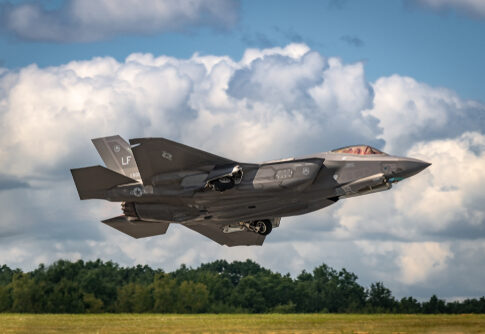One year ago, terrorists from Hamas attacked Israeli civilians. The conflict in the Middle East has escalated. US Air Force B-52 stealth bombers carried out precision airstrikes on five underground weapons storage facilities in Houthi-controlled Yemen. This is the first time that B-2 bombers have been used against Yemen.President Biden gave his approval for the use of the B-2 bomber.
Strategic Deployment of B-2 Bombers
On October 16, 2024, the US launched a strategic airstrike against Houthi-held areas in Yemen, using the formidable B-2 Spirit stealth bombers. This operation marked a significant shift in the US military’s approach to addressing Middle Eastern security challenges.
The decision to use B-2 bombers, which have not been used in combat since 2017, emphasizes the gravity of the situation and the US government’s determination to send a strong message to the Houthis and their supporters. These advanced aircraft targeted five underground weapons storage locations, demonstrating the U.S. military’s capability to strike deeply buried and fortified facilities.
The U.S. military conducted airstrikes on several Houthi weapons storage facilities in Yemen, the Pentagon said. https://t.co/DzoLGvq6rL
— CBS News (@CBSNews) October 17, 2024
Objectives and Implications of the Strikes
The primary objectives of these airstrikes were multifaceted. First, they sought to undermine the Houthis’ military capabilities, particularly their ability to threaten international shipping lanes in the Red Sea, Bab El-Mandeb Strait, and Gulf of Aden. Second, the operation protected US forces and ensured the safety of critical waterways vital to global commerce. Finally, this show of force was intended to deter future Houthi aggression and send a clear message to their Iranian backers.
“The employment of U.S. Air Force B-2 Spirit long-range stealth bombers demonstrate U.S. global strike capabilities to take action against these targets when necessary, anytime, anywhere.”
The presence of B-2 bombers in this operation is especially noteworthy. These aircraft, which can carry both conventional and nuclear weapons, are rarely used in combat due to their high cost and strategic value. Their participation in this mission demonstrates the United States’ seriousness about the Houthi threat, as well as its commitment to maintaining open international trade routes.
The US military carried out fresh airstrikes on #Yemen-based #Houthi rebels on October 17. The US forces used B-2 stealth bombers for the first time to attack deep underground bunkers of the Houthis in Yemen.https://t.co/gwjuxd2w9G pic.twitter.com/sy2u7eycEl
— Hindustan Times (@htTweets) October 17, 2024
Regional Context and Potential Consequences
The airstrikes come as tensions in the Middle East rise. The Houthis, who have been fighting a stalemate against a Saudi-led coalition since 2015, have recently increased their attacks on vessels in the Red Sea. These actions, which the Houthis claim are in solidarity with Palestinians amidst the ongoing Israel-Gaza conflict, have disrupted international trade and posed significant environmental risks.
While the US strikes are intended to deter Houthi aggression, they may also exacerbate regional tensions. The UN special envoy for Yemen has issued a warning about the possibility of renewed conflict in the region, which could undermine ongoing peace efforts. Furthermore, the Houthis have promised to retaliate against the US strikes, raising concerns about a vicious cycle of escalation.
The United States’ actions demonstrate its determination to protect its own and its allies’ interests in the region, while also highlighting the complex challenges of maintaining stability in this volatile part of the world.
Sources:
- by Secretary of Defense Lloyd J. Austin III on U.S. Airstrikes in Houthi-Controlled Areas of Yemen
- 2 Bombers Strike Houthi Targets in Yemen


